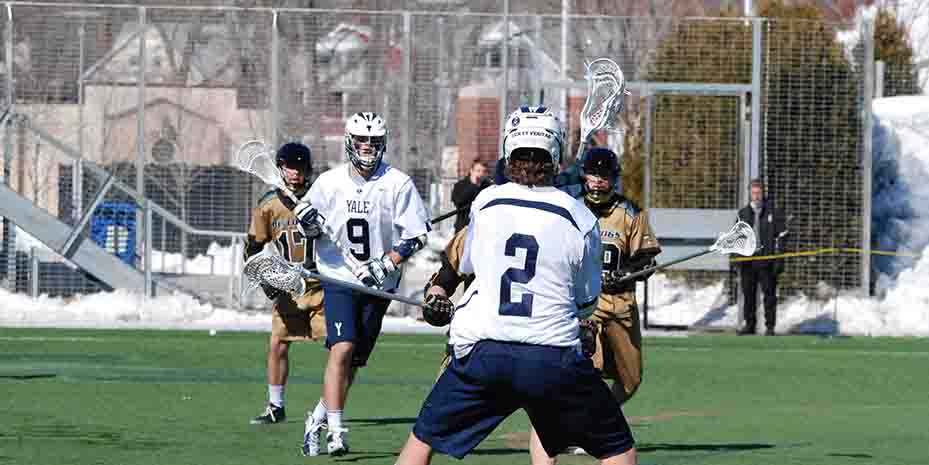
A group of five undergraduates has created a tool that is now being used by the men’s lacrosse team.
As part of a final project for ENAS 118, the team — Pamela Banner ’20, Hung Ho ’20, Christopher Miller ’20, Sebastian Rivero ’19 and Trevor Shim ’20 — designed a solution to an obstacle that lacrosse teams commonly face during practice: Goalies cannot be in the goal for too long due to risk of injury and fatigue, but offensive players need to practice many shots per day.
The student-designed device, which is a set of panels placed in the goal, allows players to practice shooting without aiming at an empty goal or exposing a goalie to potential injury. It contains five panels that are sensitive to contact and simulate hotspots for offensive players to aim at, said Ho. The panels that are turned on produce a positive sound when they are hit, while the panels that are turned off produce a negative sound.
“This tool will help us with pinpointing to our players where we want them to shoot and provide a very clear successful shot response and failed shot response,” said Jack Runkel, a Yale men’s lacrosse assistant coach.
This project was built to address a very specific issue: Lacrosse goalies sustain injuries too often when blocking shots due to lack of padding, combined with the shots they are attempting to block that reach more than 100 miles per hour, according to Rivero.
Ensuring the health of goalies, therefore, can lead to reduced practice opportunities for offensive players. Unable to shoot at goalies at game speed, the offensive players sacrifice important training at peak performance by being forced to shoot on open goals.
“Our objective was to make an engaging goal that would be entertaining and addicting for shooters. This would allow them the training they need without sacrificing goalie safety,” Rivero explained.
The device’s five panels are arranged in an L-shape that can be attached to a lacrosse goal in a number of different configurations, Banner said. The panels are attached to a handheld remote with switches and two horns. The remote allows the coach to set a target for offensive players, while the horns serve as feedback for the players.
Because coaches can control which panels are turned on or off with the flip of a switch, they can use this tool to create a specific target. Furthermore, the size of the goal to be targeted can be adjusted, depending on how many panels are turned on, according to Rivero.
Runkel said that the team has been using the tool since practices started this semester on Feb. 1, although it cannot be used when the weather is poor. He added that the team hopes it can be used to help shooters work on their accuracy by incorporating information from the team’s scouting reports on their opponents’ goalies.
“The beauty of the device is that two players can go out on the field any day before or after practice and just shoot,” Banner said. “It is very movable, easy to use and really only requires selecting a target on the remote and aiming there.”
Although the students faced time constraints and dealt with challenges during panel construction and wiring, the students enjoyed being able to produce something useful for their client, Banner said.
Co-taught by senior research scientist at the School of Engineering & Applied Science Lawrence Wilen and engineering school Deputy Dean Vincent Wilczynski, ENAS 118, “Engineering Innovation and Design,” first introduces students to a variety of engineering topics and skills. The students then take on client-based projects during the second half of the semester.
Having a practical project to work on gave students authentic experience of working on a team to achieve a desired result on time, meeting all the client needs and incorporating the client feedback, Wilen said.
These clients were chosen from organizations around campus after discussing potential projects with the professors. In this case, last summer, strength and conditioning coach Thomas Newman offered this problem statement from the lacrosse team, Wilen said.
“We are very excited to continue working with the engineering department in the future,” Newman said.
Engineering projects that help college sports programs train more effectively have recently been making headlines. These include Dartmouth’s Mobile Virtual Player, a robotic tackling dummy designed to allow football players to practice tackling without injuring one another, which was featured in The New York Times and in a Super Bowl commercial.







